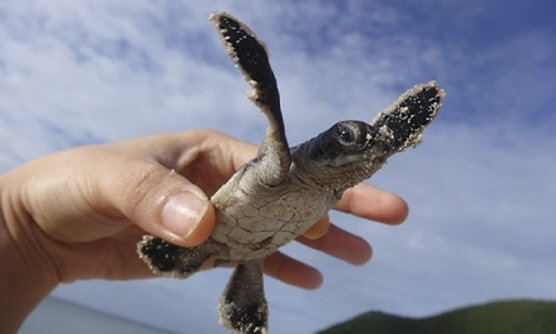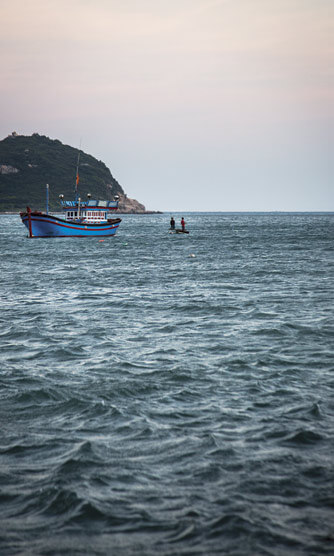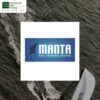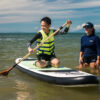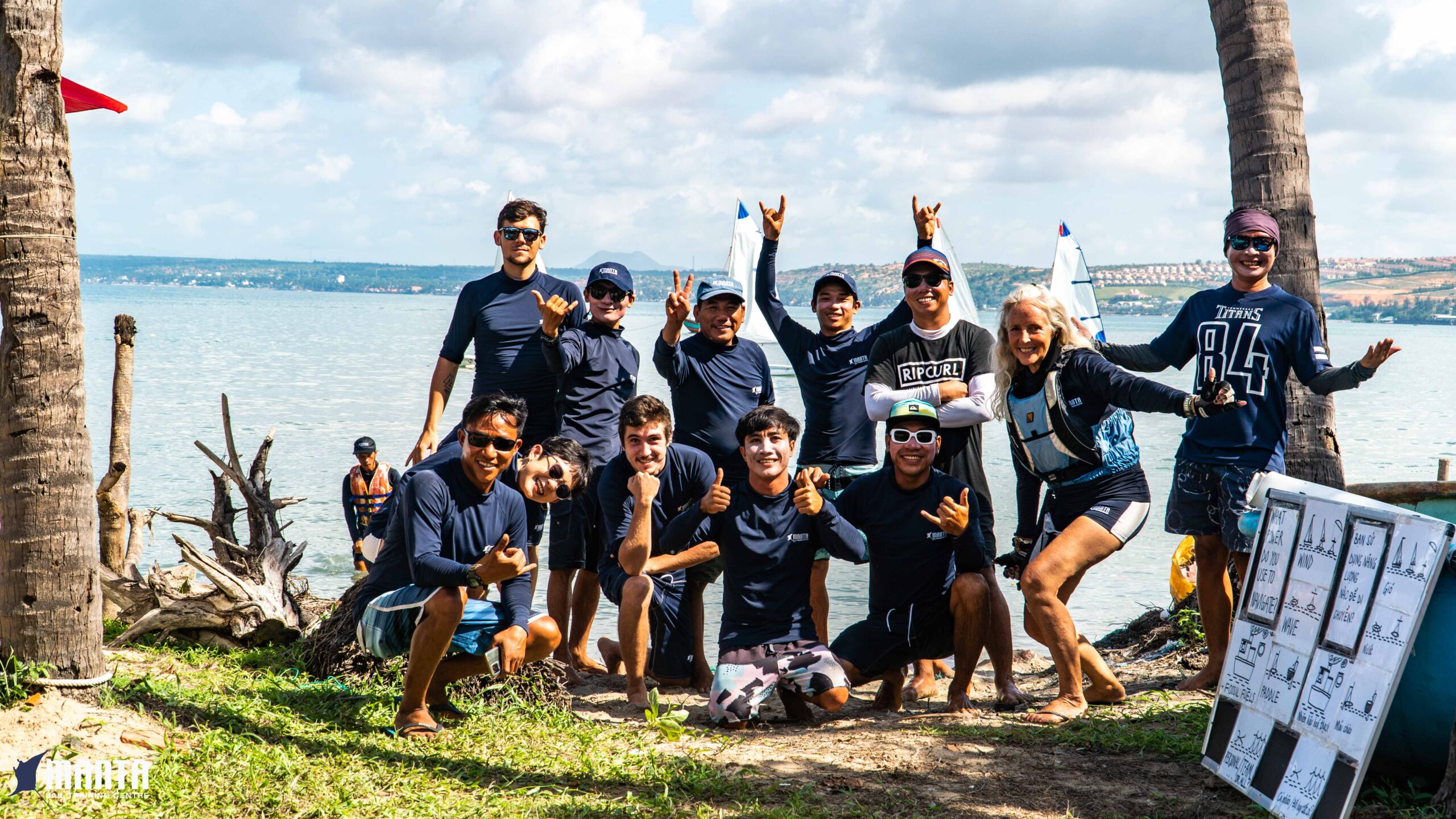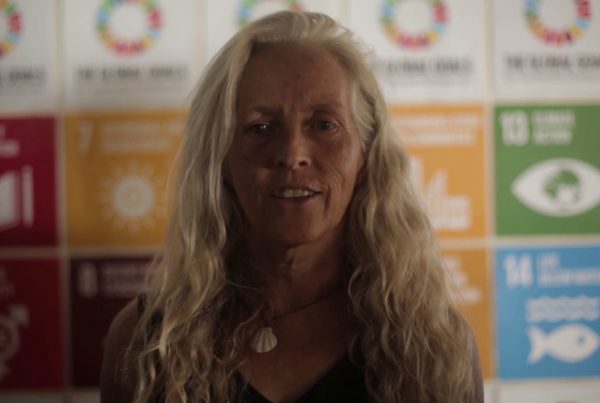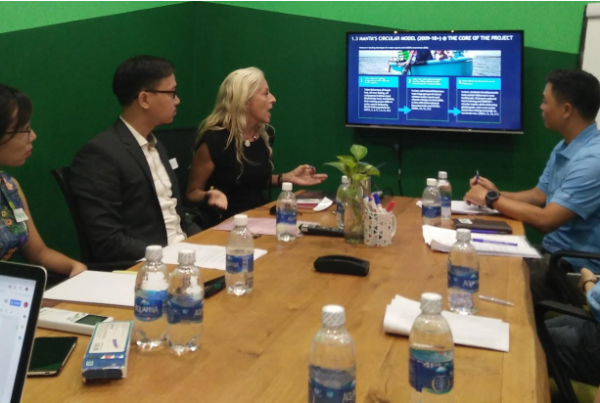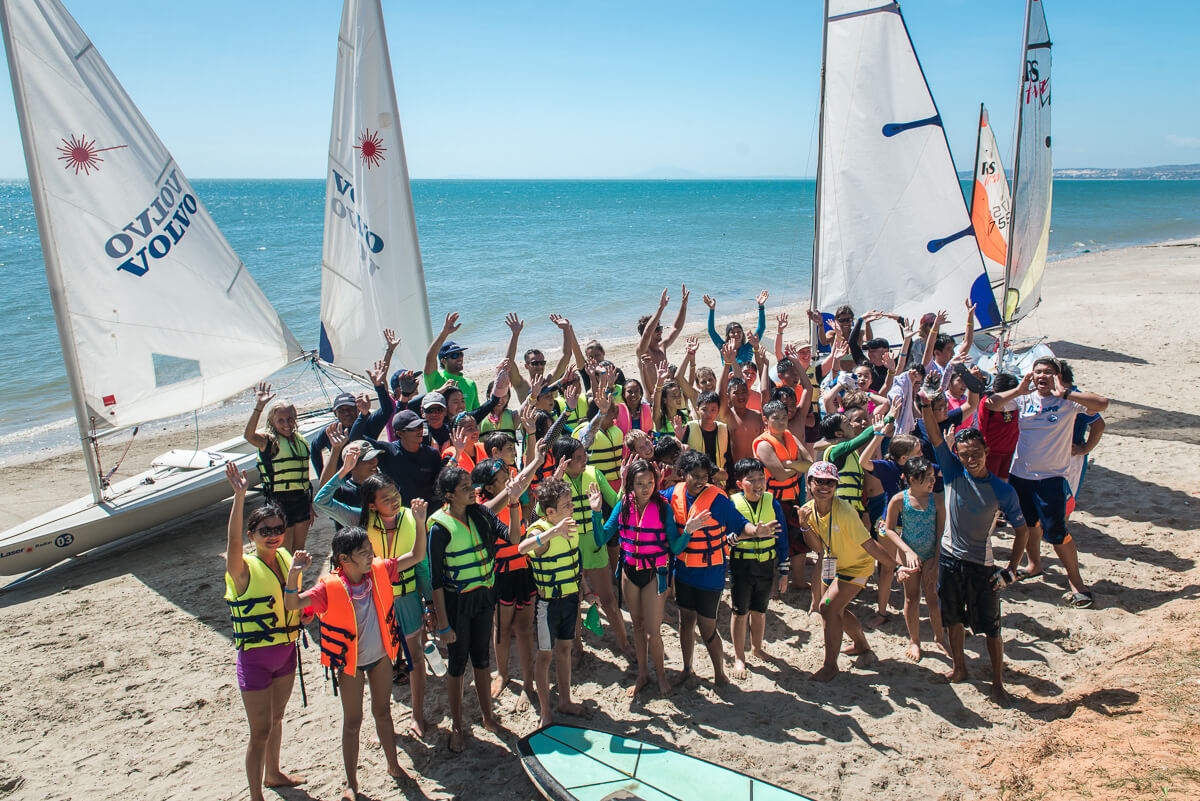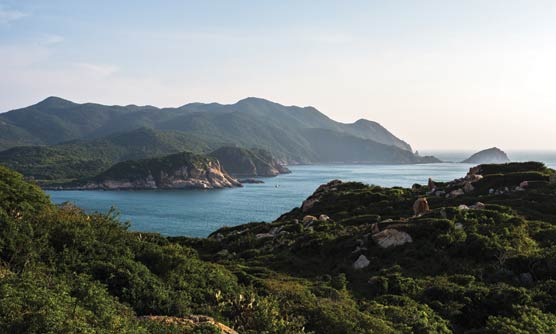 As Vietnam’s rich coastline gets carved up into marketable slices, Katie Jacobs talks with some brave souls fighting an uphill battle.
As Vietnam’s rich coastline gets carved up into marketable slices, Katie Jacobs talks with some brave souls fighting an uphill battle.
Silence. The sound of my breathing, puffed from walking uphill, feels obtrusive. A soft wind picks up, as does the faint sound of lapping water on the beach below. A flock of birds squawk as they ascend from the canopy and are gone. Thatched roofs and a small patch of rice paddies, just visible amongst the Casuarina trees and coconut palms, are the only signs of the luxury Bai Cham Hideaway Resort that lies below. I feel as though I have found the last undisturbed beach in Vietnam.
Southeast Asia is endowed with a rich network of marine and coastal ecosystems, brimming with biodiversity. With over 3,000km of coastline and numerous islands, Vietnam plays a critical role in the health and productivity of the region. Coastal features, such as sandy beaches and bays, mangrove forests, seagrass beds, coral reefs, mudflats and islands provide vital habitat and breeding grounds for a plethora of coastal and marine species.
Not only rich in environmental value, Vietnam’s coast is high in economic potential. With abundant natural resources, the coastal areas are an important contributor towards the country’s GDP. They also support the daily livelihoods of millions. Environmental pressures — such as overfishing, unsustainable resource management, pollution and the destruction of the natural coastal environment — not only threaten ecosystems, but also risk damaging the local and national economies.
Equating Economy with Ecology
Balancing coastal environmental issues with economic priorities is by no means an issue unique to Vietnam. According to the 2012 international study Valuing the Oceans led by the Stockholm Environment Institute, “Ocean services contribute in very tangible and substantial ways to local livelihoods, as well as national economies and foreign exchange receipts, government tax revenues and employment.” Yet the trillions of US dollars generated globally each year by ocean services are often overlooked, in favour of unsustainable development and alternative conservation priorities.
Despite their ecological importance, only 2 percent of the world’s oceans are designated under Marine Protected Areas (MPAs), much less than the 15 percent of protected terrestrial land.
This discrepancy between terrestrial and marine conservation is even more acute in coastal countries, such as Vietnam (one of the world’s largest seafood exporters), where the economy relies upon a healthy coastal and marine environment. Despite this, funding and knowledge of how to tackle marine-based issues are severely lacking.
“I try to stay optimistic for the future of Vietnam’s coastal and marine environment,” says Bui Thi Thu Hien, Marine and Coastal Program Coordinator for the International Union for the Conservation of Nature (IUCN) in Vietnam. “But sometimes I feel as though we are floating alone in the middle of the ocean — that our efforts are too small in comparison to what is happening in Vietnam’s coastal and marine environment.”
Marine Protected Areas
IUCN — the world’s largest conservation organisation, famous for its endangered species ‘Red List’ and management of natural World Heritage Sites (such as Halong Bay) — defines an MPA as “an area of intertidal or subtidal terrain, together with its overlying water and associated flora, fauna, historical and cultural features, which has been reserved by law or other effective means to protect part or all of the enclosed environment”.
Or, put more simply, a pocket of ocean protected to allow biodiversity to flourish. In heavily fished countries, such as Vietnam, MPAs are critical to ecosystem rehabilitation and ensuring healthy fish stocks.
In 2002, the Vietnamese government proposed a network of 15 MPAs to be launched by 2015. By 2010, Vietnam had exceeded its goal, with 16 MPAs legally established. But, despite this success, clear legislation for MPA management is still lacking. Moreover, representatives from a national MPA conference held in October 2014 in Hanoi reported that only six MPAs maintained an official management presence. Sponsored by the Asia-wide initiative Mangroves for the Future, and attended by Ministry representatives and coastal provincial leaders, the conference identified challenges facing the management and expansion of MPAs.
Inconsistent policy, inadequate resources and a lack of leadership designation were problems highlighted by MPA managers. “Knowledge of marine conservation is definitely lacking,” says IUCN Program Coordinator Hien. “But I was disappointed to hear that this is not what the MPA leaders are complaining about — their incentives are much more focused on increasing power and economic financing, not awareness.”
Despite these setbacks, conferences and discussions such as this are critical to strengthening Vietnam’s MPA network. The presence of over 100 participants from government ministries, departments and provinces throughout Vietnam clearly shows a desire to address these issues.
Coastal Buffers
MPAs alone will not save Vietnam’s coastal and marine environment. According to scientific consultant and conservation specialist Julia Shaw, threats come from a multitude of sources, such as wide-ranging pollution, unnatural landscape change and over-fishing.
Shaw initially moved to Vietnam to assist with the establishment of the NGO Wildlife at Risk. After working on an awareness-raising video about declining fish stocks in the Hon Mun MPA, Shaw decided to shift her focus to marine conservation and building alternative livelihoods for fishermen. “I quickly realised how relatively little marine research and conservation was evident in Vietnam and how desperately it is needed,” she says.
Power for the People
Local communities can pose both a challenge and an asset to the success of coastal and marine conservation. While local impacts — such as pollution from villages and resource exploitation — can exacerbate environmental degradation, community support for conservation is invaluable. “They are the eyes and ears of the MPA,” says Hien.
The Cu Lao Cham Marine Park, situated off the Quang Nam coastline, is an example of where local communities and government authorities have both recognised the value — and vulnerability — of an area heavily reliant on marine resources.
“There are 3,000 people living in the Cu Lao Cham MPA, they must be involved,” says Chu Manh Trinh, from the Cu Lao Cham MPA Authority. “Successful management of the MPA relies upon the participation of the community. Their involvement not only helps in protecting the ecosystem but it also diversifies their livelihoods and strengthens community resilience to natural disaster and climate change.”
Dragonfly Park
On a recent visit to Hoi An in Quang Nam Province, I took an early-morning bike ride to a new nature park along the Cua Dai coastline. Watching waves crash against cement beachfront barriers, I was surprised at how dramatically the beach had eroded in the year since my last visit. Ironically, in a situation where the economy is relying upon the natural environment, resort developers are both aggravator and victim.
Working to tackle this issue is the new Dragonfly Park, a community and local NGO-led project that aims to change the pattern of unnatural development along the coastline. The project has taken a beachfront plot of land that would otherwise have been developed into a resort and turned it into a coastal park and education centre for the local community.
“Keeping the memory of the original landscape is very important,” explains Dang, director of Action for the City in Hoi An. She argues that “unless parents can show their children what the natural land is supposed to look like, it will be impossible for future generations to protect the environment.”
By planting native Casuarina trees and keeping development to a minimum (the only permanent building is a self-sustaining restroom that collects rainwater), the park respects the natural environment rather than trying to manipulate it.
“This park is important for the community,” says Dang. “It creates space for children to play and adults to rest and enjoy nature. It also shows that we can respect nature, instead of cutting trees and putting in resort-like plants and grass.”
“MPAs are the key to protecting Vietnam’s coastline, not just for environmental reasons but for the health and security of people,” says Hien. “But effective legal zoning and the inclusion of local communities are critical in making a marked difference in environmental quality.”
Back at Bai Tram, I make my way down the hill and towards the beach. At the resort entrance, I pause to study a large display sign with a topographical map, outlining future plans for the resort. The ‘natural scenic location’ on which the sign is located is surrounded by residential lots that include spas, beach clubs, speciality restaurants and exclusive estates ringing the now forested hillsides.
Economy and ecology once again seem at unnecessary loggerheads, and I sigh as I remember Hien’s comment comparing marine conservation to “floating in the middle of the ocean”. Remaining optimistic, I can only hope that this planned development follows a sustainable model with community inclusion. In the meantime, I think it’s time for another swim.
